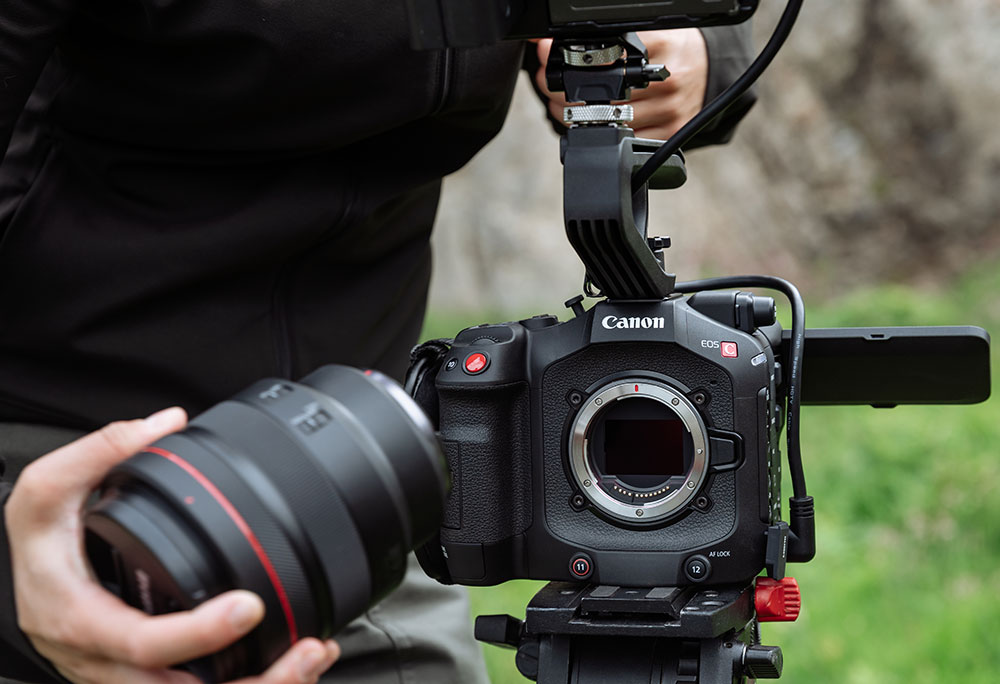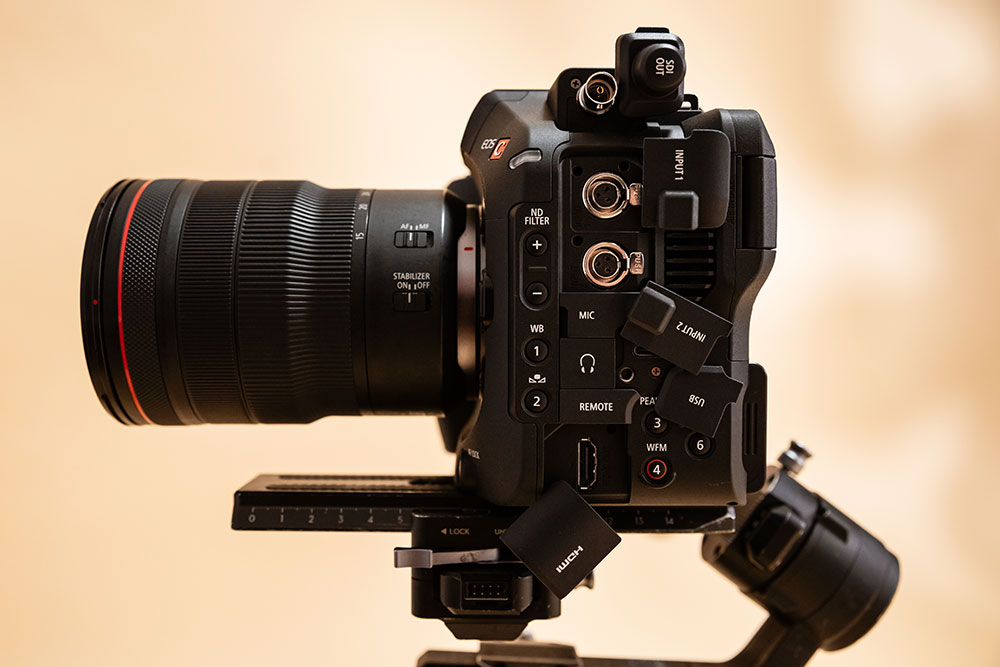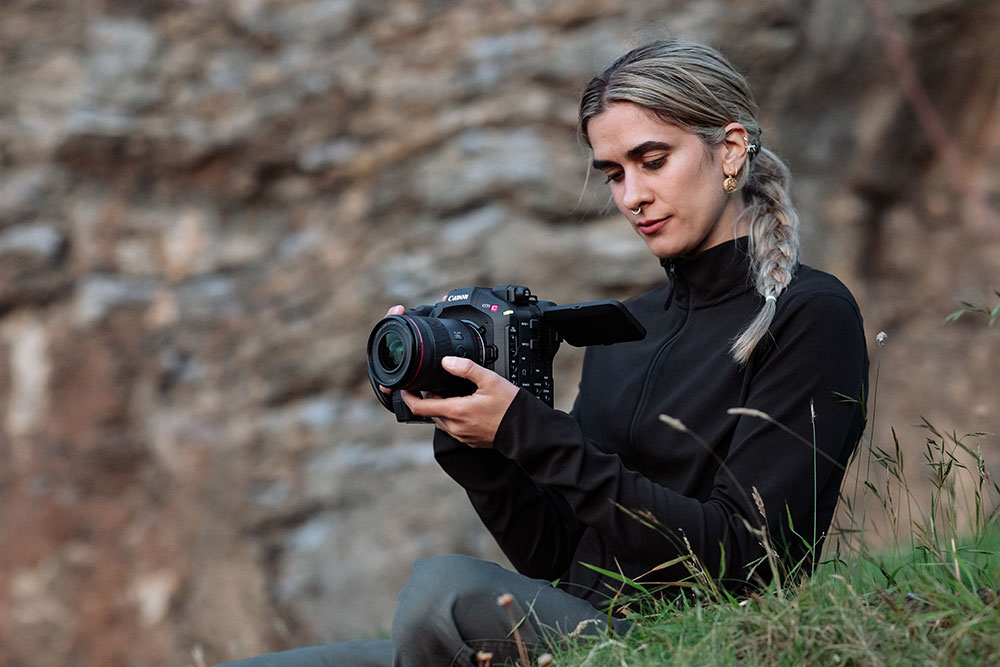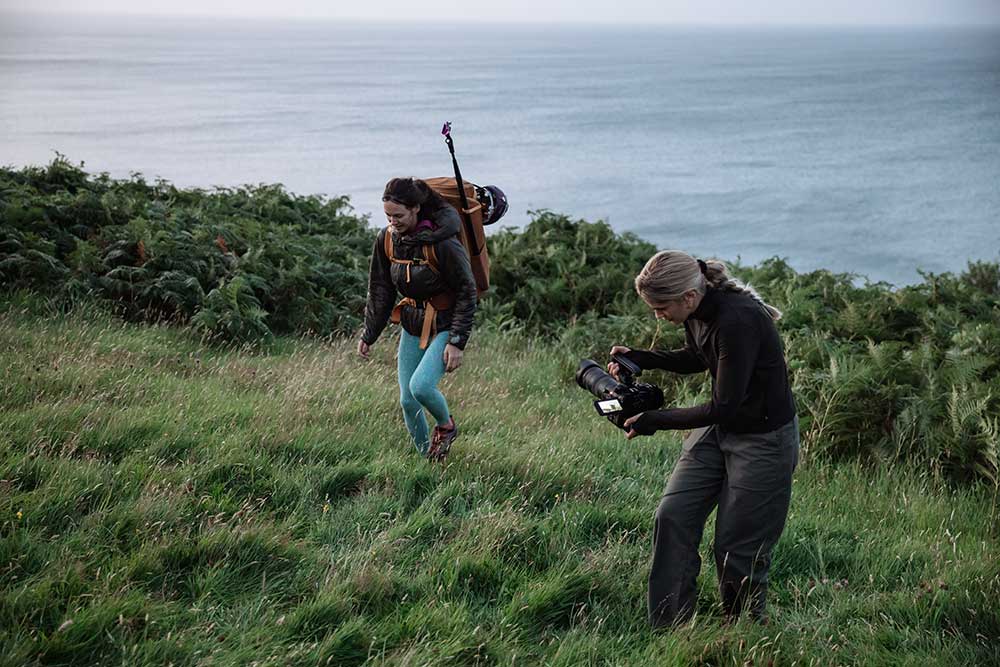- EOS C70 vs EOS C80 vs EOS C400 – The benefits and advantages of each explained
-

The full frame EOS C80 has arrived, joining Canon’s dynamic range of Cinema EOS cameras. However, you are probably wondering where this fits in and how it compares against the existing EOS C400 or the EOS C70. What are the key features and differences of the EOS C80? ...and who should buy it?
In this article, we outline the key differences between these 3 models so you can decide which one works best for you.
See the full specs comparison table
EOS C70 – 4K Super 35mm sensor
EOS C80 – 6K Full Frame with Super 35mm shooting modes
EOS C400 – 6K Full Frame with Super 35mm shooting modes

EOS C80 and EOS C400 share the same full frame back-illuminated stacked sensor with low noise, wide 16-stop dynamic range and four base ISO modes. The EOS C70 features a smaller Super 35mm Dual Gain output (DGO) sensor with 16+ stops of dynamic range. No matter which option you choose, all 3 cameras will deliver impressive image quality.
The main difference between full frame and Super 35mm sensors is their physical size. This has implications for the field of view, your choice of focal length and creative control over depth of field, among other things.
Super 35mm sensors deliver a classic cinema look whilst larger full frame sensors with higher resolution give greater flexibility to crop and reframe during the editing process.

| Type | EOS C70 | EOS C80 | EOS C400 |
|---|---|---|---|
| HDMI | Type-A | Type-A | Type-A |
| Audio Input | Mini XLR x2 | Mini XLR x2 | Mini XLR x2 |
| Timecode | Yes (BNC Terminal) | Yes (BNC Terminal) | Yes (DIN Terminal) |
| USB | USB Type-C (HOST supported/power supply) |
USB Type-C (HOST supported/power supply) |
USB Type-C (HOST supported/power supply) |
| Mic / Headphone | Yes/Yes | Yes/Yes | Yes/Yes |
| REMOTE (φ2.5mm) | Yes | Yes | Yes |
| Ethernet | Via adapter | Yes | Yes |
| Wi-Fi | Via adapter | Yes | Yes |
| SDI Out | No | Yes | Yes |
| Multi-function shoe | No | Yes | Yes |
| Lens | No | No | Yes |
| Monitor | No | No | Yes |
| Video | No | No | Yes (via USB Type-C, for LCD connection) |
| Grip | No | No | Yes (via USB Type-C, for grip connection) |
| G-Lock | No | No | Yes (DIN Terminal) |
| Sync | No | No | Yes (DIN Terminal) |
| Return | No | No | Yes (DIN Terminal) |
The EOS C80 adds a range of interfaces which were not featured on EOS C70 including built-in ethernet and Wi-Fi, SDI output and digital multifunction shoe. These additional interfaces simplify operation and make the EOS C80 a more versatile camera for a wider range of shooting needs when compared to EOS C70.
Taking it up a level, the EOS C400 features a DIN terminal for G-LOCK/SYNC/Return, monitor, video and grip, plus compatibility with industry standard lenses thanks to 12-pin lens interface. These additional interfaces give the EOS C400 the advantage over EOS C80 in situations such as live multi-camera productions
EOS C70 – 160 x 130 x 116mm / Approx 1170g
EOS C80 – 160 x 137.4 x 116mm / Approx 1300g
EOS C400 – 142 x 135 x 135mm / Approx 1540g
(W x H x D)

EOS C70 and EOS C80 are more compact and lightweight than EOS C400 which might make them a better option if you are looking for a run and gun style setup for shooting in a variety of locations. Having said that, EOS C400 is impressive in terms of its compact size and weight given the additional interfaces it includes.
All 3 cameras feature the same optical axis height meaning that accessories can be shared between cameras. This makes shooting more efficient and allows accessories to be used more effectively.
EOS C70 – Dual Pixel CMOS AF
EOS C80 – Dual Pixel CMOS AF II
EOS C400 – Dual Pixel CMOS AF II

Both EOS C80 and EOS C400 feature Dual Pixel CMOS AF II which adds a greater range of subject detection. This now includes animals as well as people and superior coverage compared to the original Dual Pixel CMOS AF system featured in EOS C70. Deep learning algorithms offer high-performance subject detection across a focusing area of up to 100% x 100% of the frame*.
*Some lenses may not be compatible. When the AF frame is outside of the entire screen area, or when focus guide is displayed or the subject cannot be detected, focusing area is approx. 90% horizontal and 100% vertical.
| EOS C70 | EOS C80 | EOS C400 | |
|---|---|---|---|
| 6K RAW | – | 30p | 60p |
| 4K | 120p | 120p | 120p |
| 2K | 120p | 180p | 180p |

EOS C80 and EOS C400 are both able to record 6K resolution from their full frame back-illuminated CMOS sensors. The EOS C400 is also able to do this at up to 60p whilst EOS C80 can record 6K 30p. All 3 cameras can record at up to 4K 120p, and in 2K mode the EOS C80 and EOS C400 can record at up to 180p which again gives them the edge over EOS C70.
Who is the EOS C80 best suited for?
With its compact size and wide array of interfaces, the EOS C80’s incredible versatility is designed to attract shooters across a wide range of content from interviews, streaming, education and corporate to events, concerts and weddings. EOS C80 will be taken both out in the field on location and in studios where it will be used for documentaries, film-schools, virtual productions and brand content.

What’s more, the EOS C80 pairs perfectly with Canon’s revolutionary range of RF lenses which provides the flexibility to swap lenses to get the best of every situation.
Learn more about the EOS C80 here.

Canon Ambassador Bonnie Cee discusses how she self-taught, self-propelled and self-funded her way from florist to filmmaker.

Sam used the EOS R5 C on his shoot ‘Off Balance’, a short film and series of stills exploring movement in studio at SUNSTUDIOS Melbourne and on location on the surrounding streets.

Red Bull was handed the keys to the Natural History Museum in London, turning it into a skatepark. A host of Red Bull skaters skated amongst many of the museum’s 80 million artifacts.